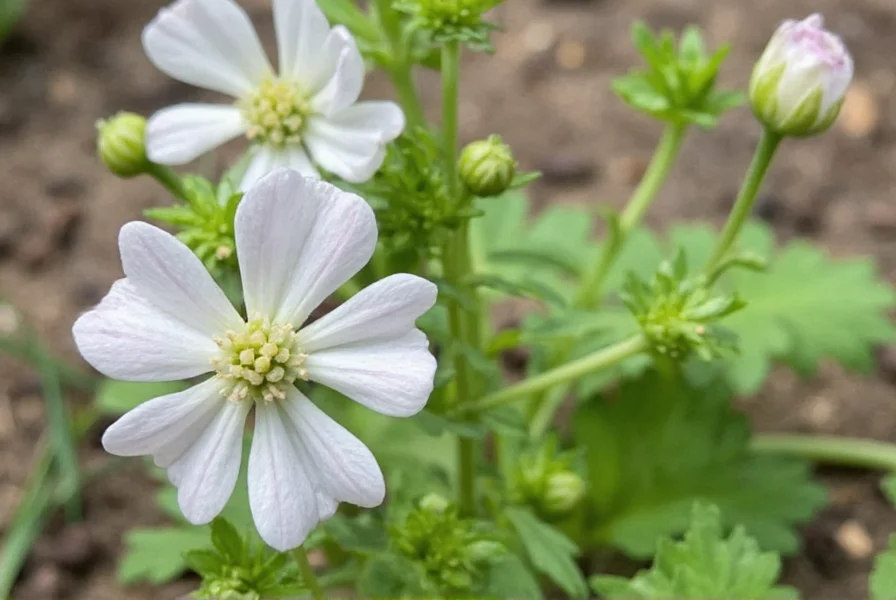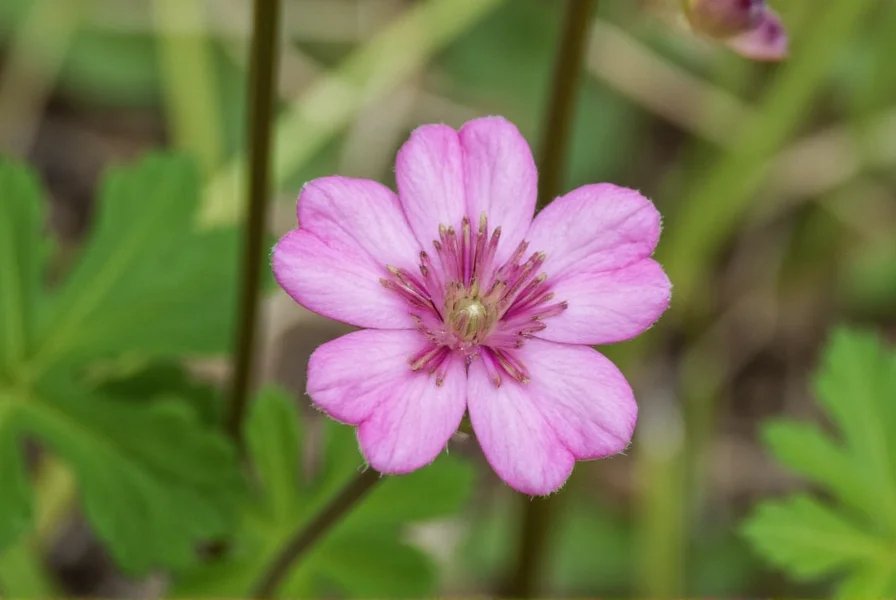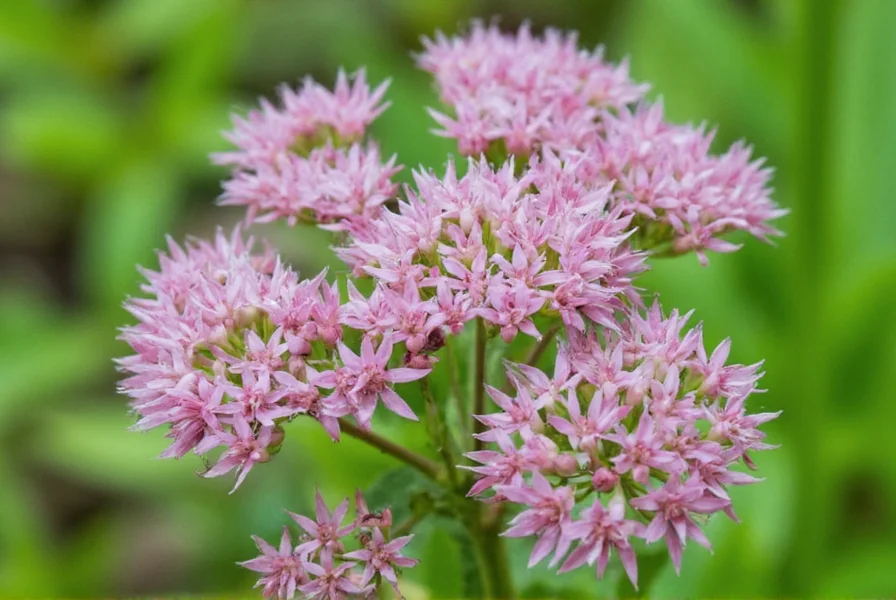Many gardeners and cooks wonder what coriander flowers look like and whether they serve any purpose beyond aesthetics. These blossoms represent a natural stage in the coriander plant's lifecycle, appearing approximately 45-60 days after planting when temperatures warm and daylight increases. Understanding when do coriander plants flower helps growers decide whether to harvest leaves, collect flowers, or wait for seed development.
The Relationship Between Cilantro and Coriander Flowers
The terminology often causes confusion: cilantro refers to the leafy green stage of Coriandrum sativum, while coriander typically describes the seeds. The flowers serve as the transitional phase between these two forms. As annual plants mature, they bolt (send up flower stalks) in response to longer daylight hours and warmer temperatures, typically when soil reaches 70°F (21°C).

Physical Characteristics of Coriander Blossoms
Coriander flowers measure approximately 1-2 inches in diameter with five asymmetrical petals forming compound umbels. The blossoms range from pure white to soft pink, with some varieties showing subtle purple tinges. Each umbel contains numerous tiny individual flowers that mature sequentially, extending the blooming period. The flowers emit a light, citrusy fragrance that intensifies when touched.
| Flowering Stage | Duration | Key Characteristics |
|---|---|---|
| Initial Bloom | 3-5 days | First white flowers appear at plant center |
| Peak Bloom | 7-10 days | Full umbel development, strongest fragrance |
| Seed Formation | 10-14 days | Petals drop, green seed pods develop |
Culinary Applications of Coriander Flowers
Many home chefs ask are coriander flowers edible—the answer is yes, with culinary benefits. These blossoms offer a more subtle flavor than mature leaves, making them excellent garnishes for salads, soups, and seafood dishes. Chefs increasingly incorporate them into coriander flower uses in cooking for their visual appeal and delicate taste. The flowers work particularly well in:
- Fresh salads as an edible garnish
- Vinegar infusions for dressings
- Compound butters for fish and vegetables
- Cheese platters alongside fresh goat cheese
- Cocktail garnishes for botanical drinks
Growing Coriander for Flowers and Seeds
For those interested in growing coriander for seeds, understanding the flowering process proves essential. To maximize seed production:
- Allow plants to bolt naturally rather than continually harvesting leaves
- Provide full sun exposure once flowering begins
- Maintain consistent moisture without waterlogging soil
- Avoid nitrogen-rich fertilizers that promote leaf growth over flowering
- Monitor seed development as flowers fade to green then brown
The transition from coriander flower to seed takes approximately 3-4 weeks after peak bloom. Gardeners harvesting seeds should watch for the characteristic color change from green to tan/brown before collecting.

Common Misconceptions About Coriander Flowers
Several myths persist regarding these blossoms. Contrary to popular belief, coriander flowers don't taste identical to cilantro leaves—they offer a more nuanced flavor profile. Additionally, while some assume flowering means the plant has "gone bad," it's actually a natural progression. Understanding the coriander flower to seed timeline helps gardeners plan harvests for either fresh flowers, mature seeds, or both.
Preserving Coriander Flowers
For extended use, several preservation methods work effectively:
- Refrigeration: Store in damp paper towels inside airtight containers for 3-5 days
- Freezing: Preserve in ice cube trays with water or oil for cooking applications
- Drying: Hang small bunches upside down in dark, dry areas for culinary use
- Infusing: Create vinegars, oils, or spirits with fresh blossoms
Unlike cilantro leaves which lose flavor when dried, coriander flowers retain more of their aromatic compounds through careful dehydration.
Conclusion
Coriander flowers represent a valuable yet often overlooked component of the coriander plant lifecycle. Their edible nature, subtle flavor profile, and role in seed production make them worthy of attention from both gardeners and culinary enthusiasts. By understanding what do coriander flowers look like and their developmental timeline, growers can maximize their harvest for fresh consumption, seed collection, or preservation. These delicate blossoms bridge the gap between cilantro's leafy stage and coriander seed production, offering unique culinary possibilities throughout their brief flowering period.
Are coriander flowers edible and safe to eat?
Yes, coriander flowers are completely edible and safe to consume. They contain the same compounds as cilantro leaves and coriander seeds but in different concentrations, offering a milder, sweeter flavor profile with subtle citrus notes. Many chefs use them as edible garnishes for salads, soups, and seafood dishes.
How long after flowering do coriander seeds develop?
Coriander seeds begin forming immediately after pollination, with visible green seed pods appearing within 7-10 days of peak bloom. The complete maturation process from flower to harvest-ready seed takes approximately 3-4 weeks. Seeds change from green to tan/brown when ready for harvest, typically 30-45 days after flowering begins.
Can I prevent my cilantro from flowering to get more leaves?
While you can delay flowering by keeping plants cool and shaded, you cannot completely prevent bolting in mature cilantro plants. Succession planting every 2-3 weeks provides continuous leaf harvests. Once flowering begins, the plant shifts energy from leaf production to seed development, though you can still harvest remaining leaves alongside flowers.
What's the difference between cilantro flowers and coriander flowers?
There is no difference—these terms refer to the same blossoms. "Cilantro" describes the leafy stage of Coriandrum sativum, while "coriander" typically refers to the seeds. The flowers represent the transitional phase between these stages. The plant produces identical blossoms regardless of what name you use for the plant.
Do coriander flowers have medicinal properties?
Traditional medicine systems have used coriander flowers for digestive support and as a mild sedative, though scientific research specifically on the flowers is limited. They contain similar antioxidant compounds as other parts of the plant, including linalool and terpenes. Most medicinal research focuses on coriander seeds rather than flowers.











 浙公网安备
33010002000092号
浙公网安备
33010002000092号 浙B2-20120091-4
浙B2-20120091-4